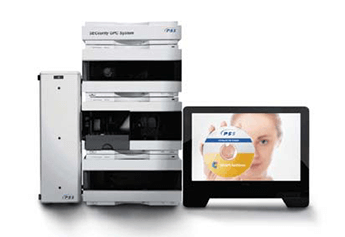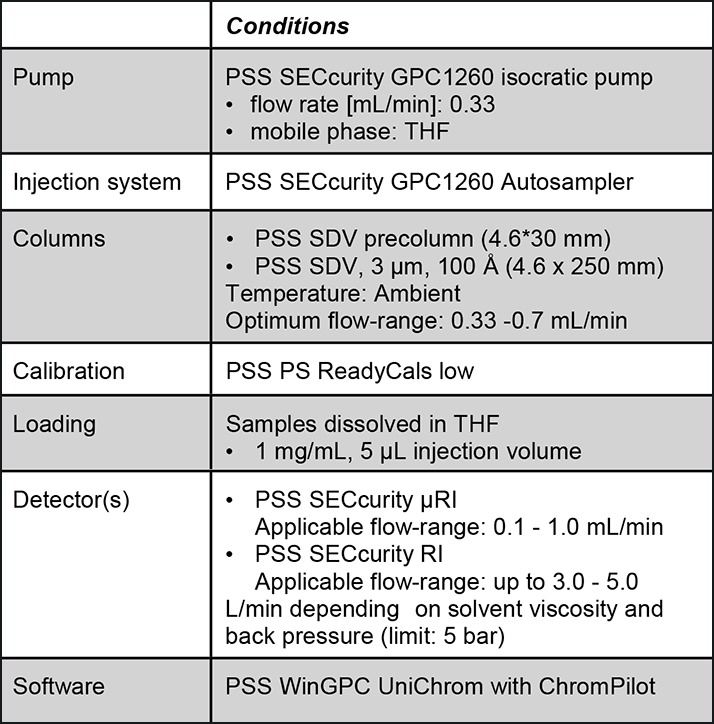Efficient and fast separation for low molar mass polymers and proteins can be achieved using a combination of micro columns packed with smaller particles and optimized detectors. Although traditional analytical RI detectors, such as the SECcurity RI, profit from the higher resolution of micro columns, less peak broadening and higher resolution are the benefits that dedicated micro cell detection units offer.

Introduction
As in HPLC before there is now a trend in GPC/SEC to separate low molar mass polymers and oligomers on columns filled with particles of small particle size. Smaller particles generally have the advantage that higher resolution is achieved. Unlike in UHPLC in :GPC/SEC it is not the extremely high pressures that are a challenge but the cell volumes of the typical GPC/SEC detectors and the dead volumes especially when working with multi detection. If the cell volume is too large, the previously separated oligomers will be back- mixed in the detector cell and the advantage of small particle sizes and dedicated micro columns is lost. Cells with small volumes are already available for many UV/DAD detectors and can be replaced easily. However for the most common GPC/SEC detector, the refractive index RI, only very few models are suited and there is no easy exchange of cells. With the PSS SECcurity :-RI an RI with smallest cell volume (1.7 :L), specifically designed for the use with micro columns is now available. The detector can be seamlessly retrofitted at any time in PSS SECcurity GPC systems as well as in Agilent 1260/1290-Systems.

 System Requirements
System Requirements




